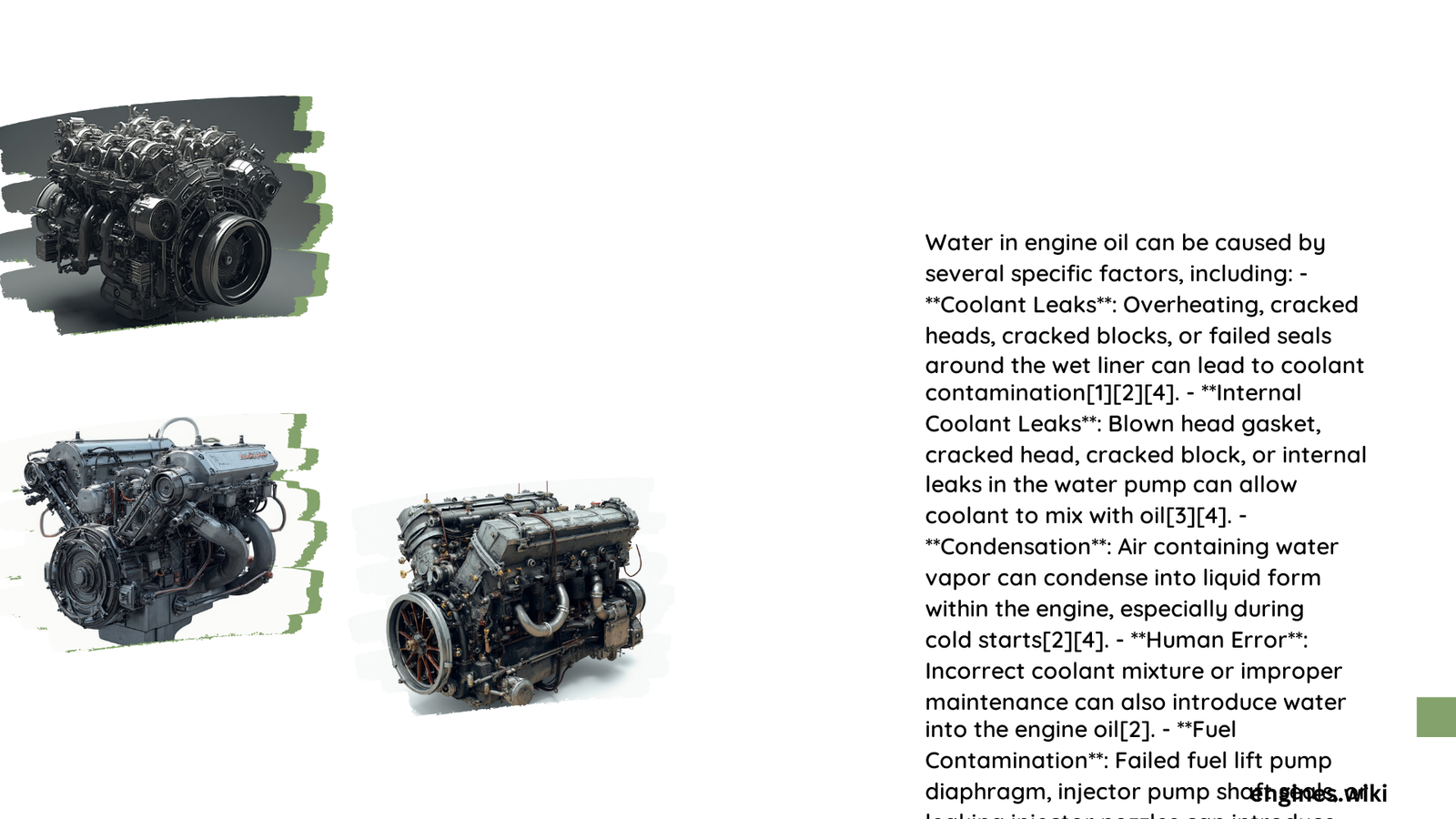Water contamination in engine oil can lead to serious engine damage if left unchecked. The main causes include coolant leaks, head gasket failures, condensation buildup, and oil cooler malfunctions. These issues can arise from mechanical failures, chemical reactions, or environmental factors. Understanding these causes is crucial for maintaining engine health and preventing costly repairs.
What Are the Primary Sources of Water Contamination in Engine Oil?
Water can enter engine oil through various pathways, each with its own set of causes and consequences. Let’s explore the main sources:
- Coolant leaks
- Head gasket failures
- Condensation buildup
- Oil cooler malfunctions
How Do Coolant Leaks Contribute to Water in Engine Oil?
Coolant leaks are a significant source of water contamination in engine oil. Here are the key factors:
- Leaking Head Gasket: A failed head gasket can allow coolant to enter the combustion chambers and mix with the engine oil.
- Pressure Thresholds: Coolant can leak into the oil system when the head gasket fails to maintain the necessary seal between the engine block and cylinder head.
- Temperature Ranges: Overheating, with temperatures exceeding 220°F (104°C), can lead to head gasket failure.
- Material Specifications: Multi-layer steel (MLS) gaskets are commonly used but can fail if improperly installed or subjected to extreme conditions.
What Role Do Head Gasket Failures Play in Oil Contamination?
Head gasket failures can introduce water into the engine oil through:
- Cracks in Cylinder Head or Block: Overheating or frost damage can cause cracks that allow coolant to seep into the oil.
- Corrosion: Lack of corrosion inhibitors in the coolant can lead to sludge formation and corrosion, potentially piercing the cylinder wall.
How Does Condensation Buildup Affect Engine Oil?
Condensation within the engine can contribute to water in the oil through:
- Humidity Levels: High humidity can lead to condensation inside the engine when cool air or combustion gases lower the temperature to the dew point.
- Temperature Fluctuations: Short trips exacerbate condensation issues as the engine doesn’t reach optimal operating temperature.
- Quantitative Data: Internal combustion engines produce about one gallon of water for every gallon of fuel burned, which can condense inside the engine.
What Are the Signs of Oil Cooler Malfunctions Leading to Water Contamination?
Oil cooler malfunctions can be identified through:
- Oil and Coolant Temperatures: Abnormal temperature ranges (above 250°F or 121°C for oil) can indicate a malfunction.
- Flow Rates: Reduced flow rates in oil or coolant systems may signal a blockage or failure.
- Typical Lifespan: Under normal conditions, an oil cooler can last 50,000 to 100,000 miles, but extreme conditions can reduce this.
What Are the Estimated Costs and Timeframes for Diagnosing and Repairing These Issues?

| Issue | Diagnosis Time | Repair Time | Estimated Cost |
|---|---|---|---|
| Coolant Leak | 1-2 hours | 5-10 hours | $875-$1750 |
| Head Gasket Failure | 1-2 hours | 5-10 hours | $875-$1750 |
| Condensation Buildup | 1 hour | Preventive measures | $100-$300 |
| Oil Cooler Malfunction | 1-2 hours | 2-5 hours | $350-$875 |
How Can You Prevent Water Contamination in Engine Oil?
To minimize the risk of water contamination in your engine oil:
- Regularly check coolant levels and quality
- Maintain proper engine operating temperatures
- Use high-quality engine oil and change it according to manufacturer recommendations
- Address any leaks or unusual engine behavior promptly
- In cold climates, use a block heater to reduce condensation during startup
By understanding the possible causes of water in engine oil and taking preventive measures, you can significantly extend the life of your engine and avoid costly repairs.
